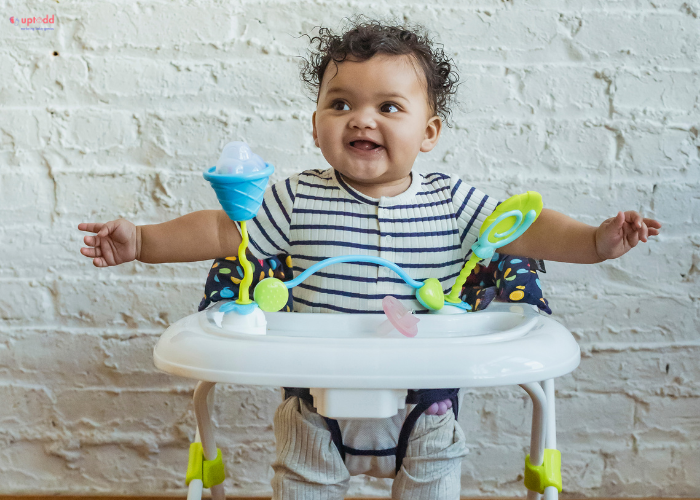
Baby Walker : Pros and Cons
Topic
Baby Walker : Pros and Cons
May start as early as
6 Months
─────────
May end around
18 Months
Related Skills
Baby Walker, A fun way to make your baby learn walking, right!
When our baby starts taking small steps we immediately think of buying supporting equipment like baby walker because when we were young we all used walker, with the feeling that we are incharge of everything that we do, we could go to places where we wanted to go and that too without needing anyone’s help. Many families still continue to use BW walker to keep the child occupied or to accelerate his/her development. We know, babies are very curious beings and as they grow older, they want to explore their surroundings and learn new things. However, being unable to walk may be a hindrance for the little explorers. This is where baby walker come in. Baby walker are little devices with wheels on all four sides that the baby can use to move around when they haven’t yet learned how to walk.
As the baby’s toe touches the ground, the baby can use it to drag the walker wherever it wants to go. The walker often come with some entertaining toys, colourful lights, or music.
But Do you know……!
In Canada and in US, the sale of baby walker is banned.
As the American Academy of Pediatrics (AAP) states, walker are not safe for babies to use.
Why? Because walkers are dangerous. According to a study in the journal Pediatrics, between 1990 and 2014, more than 230,000 children less than 15 months of age were treated in US emergency departments for injuries related to walker. The majority of injuries happen when children fall down stairs in a baby walker, usually injuring their head or neck, sometimes seriously.
Reference taken from Infant Walker–Related Injuries in the United States
But it’s not just stairs that can be a problem. Baby’s in walker can get their fingers caught, pull things down on themselves, or grab dangerous things (such as sharp objects or hot liquids) that would otherwise be out of their reach. Baby’s can fall out of walker and get hurt and have drowned when they scoot into a pool or spa. There have also been injuries from toys attached to a baby walker.
In this blog we’ll cover-
Are Walker Bad for Babies?
How effectively you can use walkers with your babies?
What Are Some Safe Alternatives to Baby Walker?
Are Baby Walker Bad for Babies?
So are baby walker safe? By now you probably realise that the short answer is no, they’re not. Baby walker with wheels pose a risk to a child’s safety and development.
But we’ll tell you how to use them effectively and safely later in the blog.
But exactly why are walkers bad for babies? There are a few specific hazards to be concerned about well here are some of the common issues associated with baby walker with wheels:
Falling down stairs
According to the AAP, children under 15 months old were treated for baby walker–related injuries, the AAP added, between 1990 and 2014. Of those injuries, a huge 74 percent involved infants falling down the stairs while in a wheeled baby walker.
Moving too quickly
Unfortunately, walkers for babies can pose a threat even when you’re closely supervising. Once a baby gets the hang of how to scoot around, they can pick up speed. “They can quickly get away from a parent or caregiver and into a dangerous situation,”
Reaching for hazardous items
Mothers have seen multiple injuries from babies reaching for hazardous items while using a baby walker with wheels. In one case, an infant reached up and swiped a soup pot handle while passing by a stove. Another incident: The pot’s contents fell on the baby, resulting in third-degree burns.
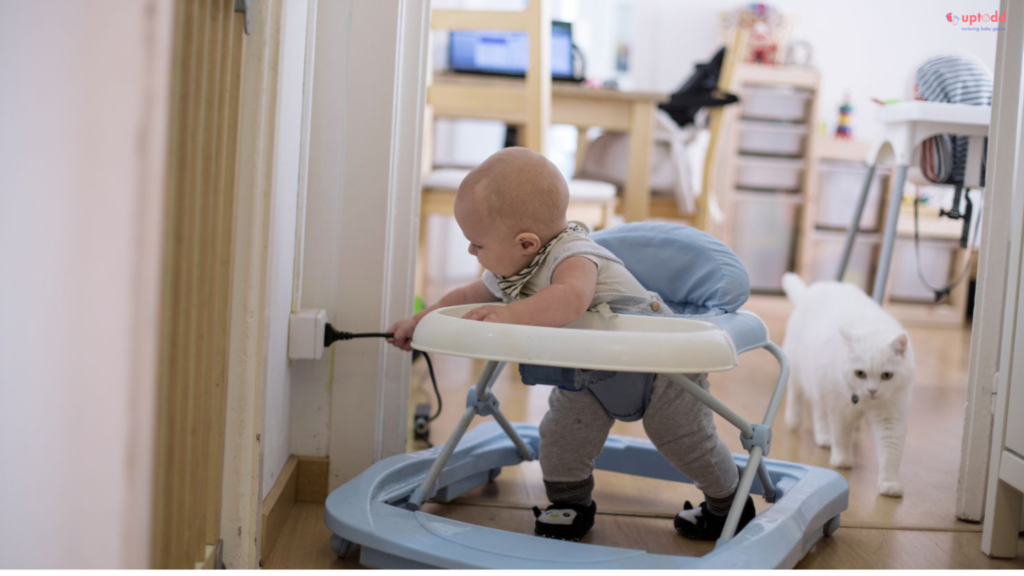
Improper leg development
From a developmental perspective, baby walker place a child in an atypical standing position, promoting external rotation and pointed toes. This can put unnecessary force on joints, creating an abnormal walking pattern and impacting typical muscle development.
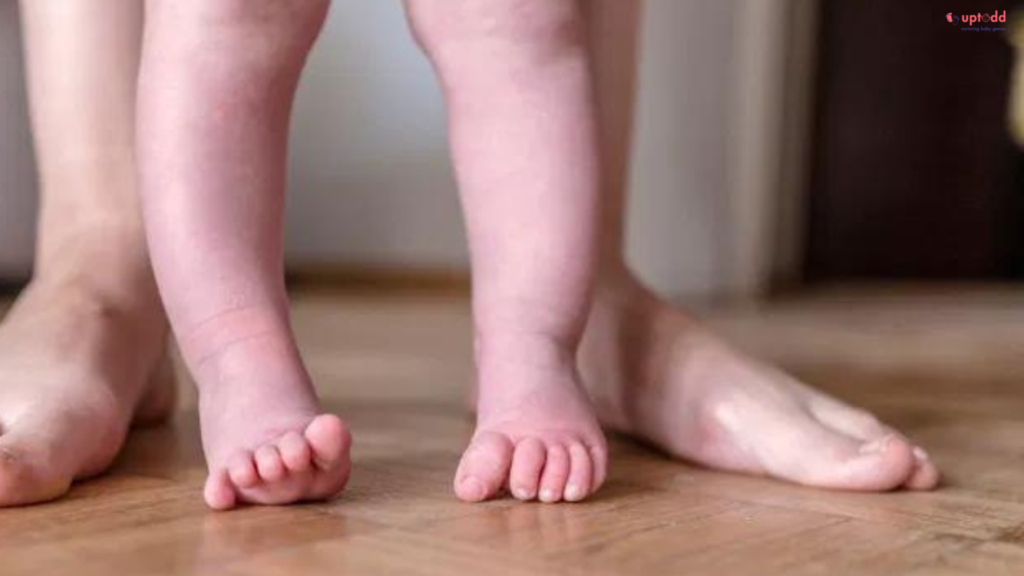
But why is it all happening?
The study found that many moms used baby walkers to keep their children entertained while they got things done around the house. Even though these moms didn’t work outside the home or have other kids to care for, they still chose to use walkers. This might be because they didn’t fully understand the risks involved in using the walker as this shows lack of supervision.
Reference From- Evaluation of the effects of using a baby walker on trunk control and motor development
Baby Walker: A Dangerous Choice
How effectively you can use walker with your babies?
Well, the baby walker is not good or bad; its impact on your baby hugely depends on when you introduce this to them. Yes, you read it right, so let us discuss some crucial points associated with safety tips for baby walker usage so that you get all the answers that concern you.
First of all understand the age, as to at what age you should introduce the walkers to your baby.
Recommended age for walker
The recommended age for walker ranges from 6 months to 16 months. If you introduce a baby walker early, it may harm the child’s legs since they are not ready to bear the weight and balance their body.
Yes, this is a vast range, and thus, it becomes necessary for parents to know the right time. Babies usually tend to start balancing their heads by six months, but this does not mean they are ready to walk.
6-18 months babies
This is the stage where your baby starts crawling and understands coordinating hand and leg movement. Slowly around the age of the 1 year baby starts to walk. You can introduce walker at around 9/10 months of age.
Most children are a pro at walking by the time they turn 2. They will start walking independently, and if you make a smooth transition from walker to independent walking, the child will be confident and happy.
Reference From When is The Right Time to Use A Baby Walker?
Safety measures to take
You must be observant and patient when looking for a walker. There will be numerous options, which can be confusing as every brand promotes its product to be the best. Here are some measures that should taken to make a wise decision:
Sturdy Construction
The best baby walker has a sturdy frame made of high-quality material that ensures safety and durability. You should never compromise with this aspect. Check out details of the material used in making the product. Buy an ISI-certified product as it conveys that it is tried and tested.
Suitable Height and Weight Limit
Brands make baby walkers of different heights and weight limits to ensure every parent gets a perfect product. Therefore, you should check the specifications before placing an order.
Safety Features
Apart from quality, you should also consider safety features like wheels, harnesses, brakes, and grips in a baby boy or baby girl walker. An anti-skid wheel ensures your baby falls even if he pushes with force. A well-designed grip helps your baby maintain his balance and hold.
Most importantly you should use a walker for your baby for a specific time during the day. All-day use might make your baby happy, but it can be tiring. Also, you should monitor your baby for uneven surfaces or stairs inside the house when your baby is using the walker. As supervision is important with walkers.
What Are Some Safe Alternatives to Baby Walker?
Now that we have discussed the baby walker age limit and how effectively we can use the walkers, let’s discuss now some safe alternatives that we can use of walkers that we can use with our babies.
Push Walker Toys
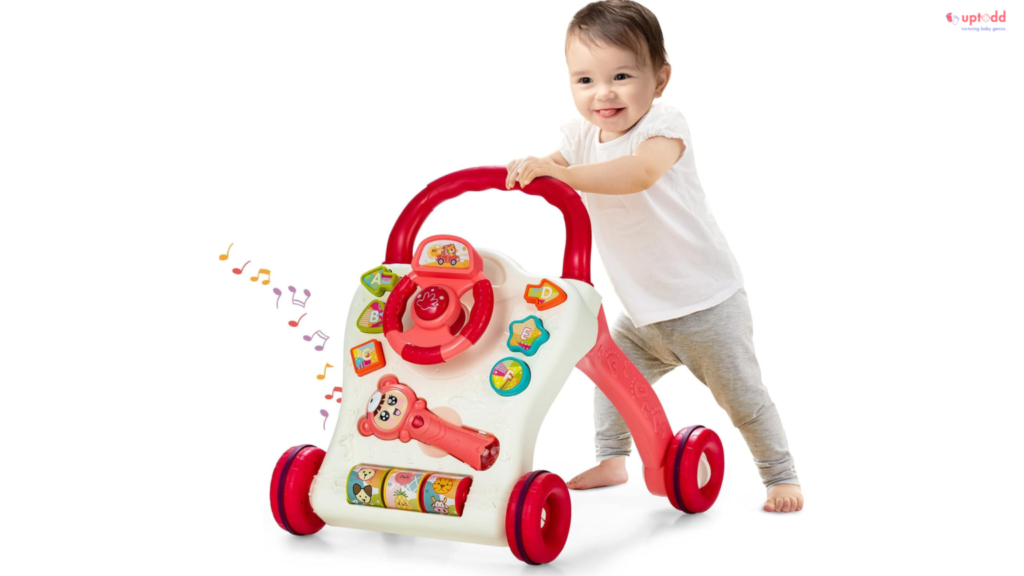
These are the modern version of old wooden push walker. It is a baby activity walker where your baby would push and play with the toys attached.
Stand-behind Walker
An upgraded type of push walker, this toddler walker provides sturdy support for your baby. Also, the wheels are designed not to skid quickly as the baby pushes, ensuring proper support at all times.
Activity Centre Walker
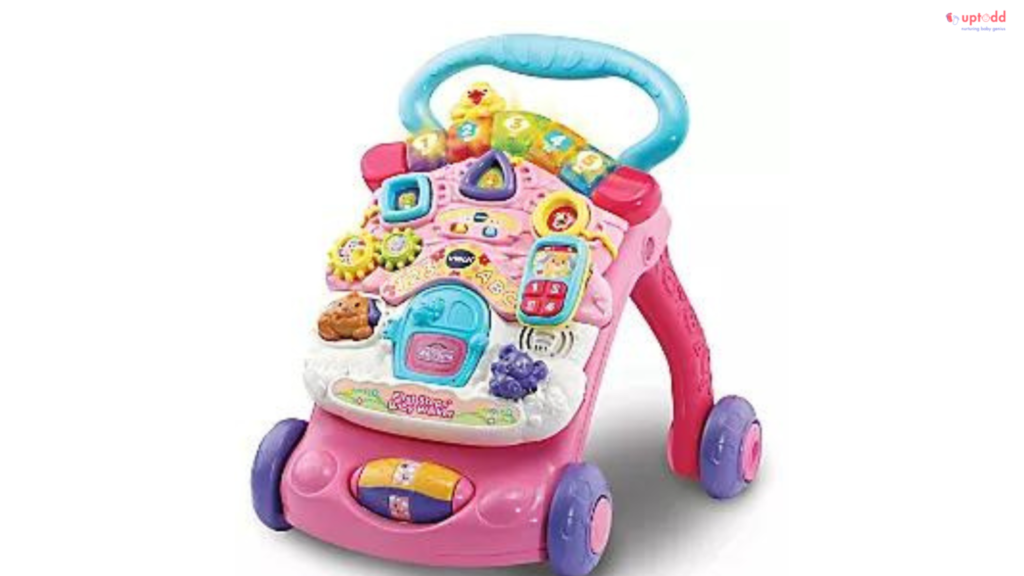
One of the most popular and best, this provides all desired features and safety your child needs. It is a modern version of the traditional sit-in style with a sturdy frame, anti-fall wheels, interactive toys, and a baby walker with music.
Bouncers
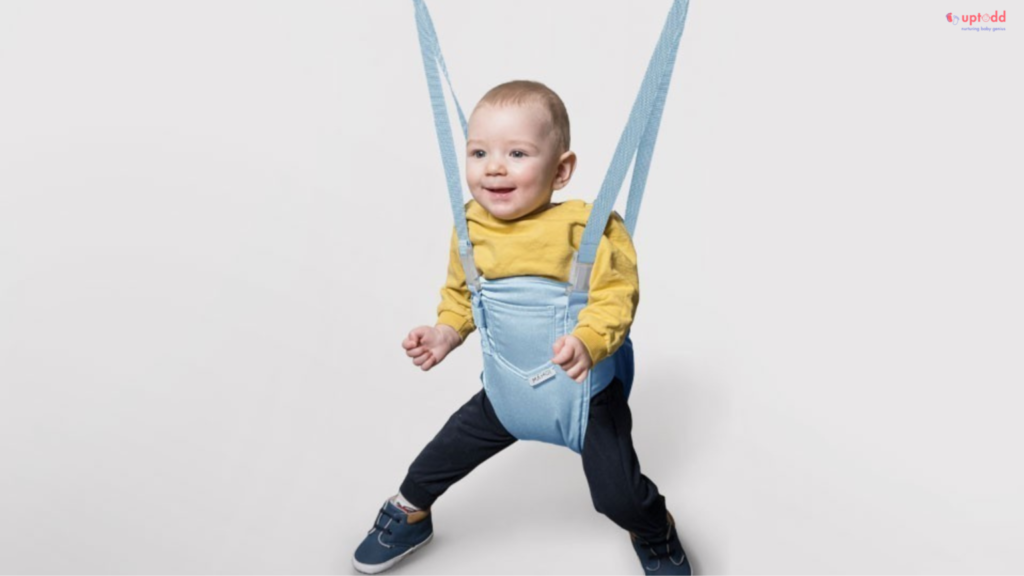
Bouncers are seats that gently bounce when your baby moves, providing them with entertainment and helping to develop their motor skills.
Play mats

These provide a soft and safe place for your baby to play and explore. Many play mats come with built-in toys and activities.
Final Thoughts
In the end we would like to say that baby walkers might seem like a fun way to help your child learn to walk, they come with significant risks and limited benefits. The dangers, such as falling down stairs, reaching for harmful items, and improper leg development, make walkers a risky choice for many families. Instead, consider safer alternatives like push walker toys and activity centres that support your child’s development without the hazards. By choosing safer options and closely supervising your baby, you can help them explore and grow in a secure and supportive environment. Your child’s safety and healthy development should always come first.
Research & Resources
- https://publications.aap.org/pediatrics/article-abstract/142/4/e20174332/37420/Infant-Walker-Related-Injuries-in-the-United?redirectedFrom=fulltext?autologincheck=redirected
- https://www.ncbi.nlm.nih.gov/pmc/articles/PMC8269937/
- https://www.healthychildren.org/English/safety-prevention/at-home/Pages/baby-walkers-a-dangerous-choice.aspx
- https://www.motherhoodchaitanya.com/right-time-use-baby-walker-safety-concerns-linked/
- https://www.researchgate.net/publication/368999706_The_Effect_of_the_Use_of_a_Walker_in_Infancy_on_the_Musculoskeletal_System_and_the_Level_of_Physical_Activity






